-
OpenProject: Best overall
-
Tuleap: Best for DevOps team
-
Orangescrum: Best for enterprise
-
GanttProject: Best for ease of use
-
Taiga: Best for small business
-
Leantime: Best for small teams and startups
-
ProjectLibre: Best low-costs alternative to Microsoft project
-
Wekan: Best for kanban boards
Project management is a critical aspect of any organization, whether you’re a startup or a large corporation. It involves planning, organizing and managing resources to achieve specific goals and objectives within a given timeline. While many proprietary project management tools are available in the market, open-source project management software provides an alternative for those who prefer to use free, customizable and community-driven software solutions.
We analyzed our picks for the top eight open-source project management software of 2023, including their features, cost, pros and cons. We also outline the steps to follow when shopping for open-source project management tools.
SEE: Looking for a project manager to lead your project team?
Top open-source project management software: Comparison table
Here is a head-to-head comparison of the top eight open-source project management tools.
| Software | Best for | Deployment | Budget and cost tracking | Pricing (per month) |
|---|---|---|---|---|
| OpenProject | Best overall | On-premises and cloud options | Yes | Free plan available Paid plans start at $7.25 per user |
| Tuleap | DevOps team | On-premises and cloud options | No | Free plan available Paid plans start at $25.05 per user |
| Orangescrum | Enterprise | On-premises and cloud options | Yes | Free plan available Paid plans start at $8 per user |
| GanttProject | Ease of use | On-premises Limited cloud functionality | Limited | Free |
| Taiga | Small businesses | On-premises and cloud options | No | Free plan available Paid plans start at $70 |
| Leantime | Small teams and startups | On-premises and cloud options | No | Free plan available Paid plans start at $7 per user |
| ProjectLibre | Low-cost alternative to Microsoft Project | On-premises ProjectLibre Cloud is in beta testing. | No | Free |
| Wekan | Kanban board | On-premises | No | Free |
OpenProject: Best overall
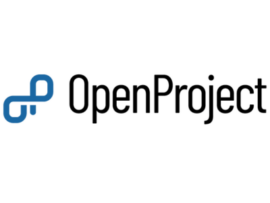
OpenProject is a web-based, open-source project management software that helps location-independent teams organize and track projects in a collaborative, hybrid environment. It provides project planning and scheduling, cost control and budget management, collaboration and communication tools, bug tracking, and other project management features.
OpenProject can be used by teams of any size and is suitable for both Agile and traditional project management.
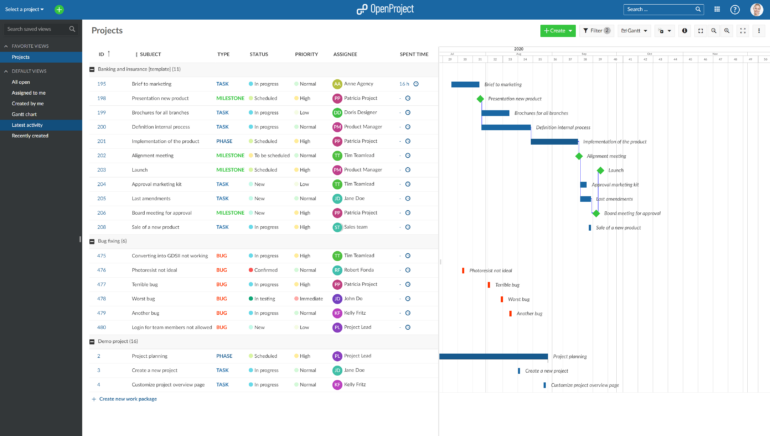
Pricing
- Community: No cost for on-premises hosts.
- Basic: $7.25 per user per month, billed annually (minimum five users), for on-premises and cloud hosts.
- Professional: $13.50 per user per month, billed annually (minimum 25 users), for on-premises and cloud hosts.
- Premium: $19.50 per user per month, billed annually (minimum 100 users), for on-premises and cloud hosts.
- Corporate: Supports on-premises hosts for a minimum of 250 users. Contact sales for a custom quote.
Standout features
- Time tracking capability.
- Supported views including cards, Agile boards, Gantt charts and timelines.
- An automatic scheduling mode and a manual scheduling mode are available.
- Cost tracking capability.
- Supported BIM features, including IFC 3D model upload and viewer, BCF management and Revit integration.
- OpenProject integrates with Gitlab, Jira, Microsoft Project, Toggl and Slack.
Pros
- 14-day free trial available.
- In-built wiki capability.
- Workflow and customization.
- On-site support available for the corporate plan.
- The tool community edition has over 200 contributors and 47 releases.
Cons
- Limited support.
- Users reported issues with the resource management feature.
See how OpenProject compares to our list of the best project management tools.
Tuleap: Best for DevOps team
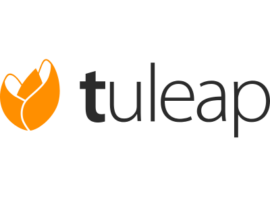
Tuleap is a web-based, open-source software platform for project management and collaboration, primarily used for software development. It is licensed under GNU GPL. Tuleap’s key capabilities include ticketing and bug-tracking, Agile planning, document management, version control, continuous integration and customizable workflow.
Tuleap can be installed on-premises or used as a cloud-based service.
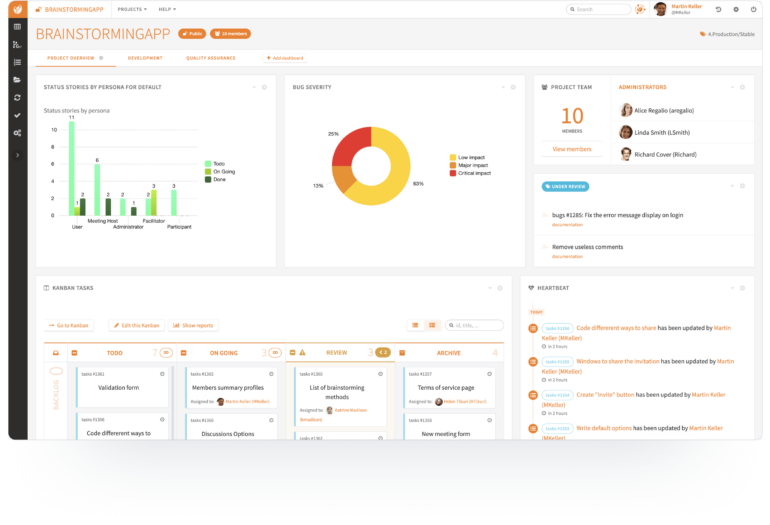
Pricing
Tuleap can be deployed on-premises and in the cloud. Your fee depends on your selected plan and the number of users.
- Community: No cost.
- Expert: $25.05 per user per month, billed annually (minimum 25 users), for on-premises hosts.
- Managed: $35.94 per user per month, billed annually (minimum 25 users), for on-premises hosts.
- myTuleap: $6.53 per user per month, billed annually (minimum 10 users), for cloud hosts.
- Premium Cloud: $28.32 per user per month, billed annually (minimum 25 users), for cloud hosts.
Standout features
- Backlog management.
- Agile Release Train (ART) cross-team backlog and Program Increments (PI) planning.
- Tuleap Git integration with Jenkins allows online code review with pull requests.
- Tuleap integrates with GitLab, Jira Software, Eclipse, Mattermost and Bugzilla.
- On-premises and cloud availability.
- Application lifecycle management.
Pros
- Support for scrum and kanban Agile methodology.
- Highly customizable.
- Native integration of Git.
- DevOps team can use it to manage their continuous improvement projects.
Cons
- Learning curve is steep for beginners.
- User interface can be improved.
See how Tuleap compares to our list of the best project management software for developers.
Orangescrum: Best for enterprise
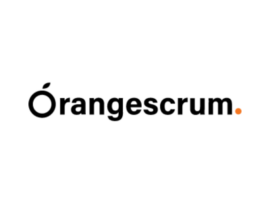
Licensed under GNU General Public License v3, Orangescrum offers an open-source enterprise edition as well as cloud and on-premises versions. Organizations looking for an all-in-one project management tool to manage Agile and traditional projects can choose Orangescrum.
This tool includes capabilities for task management, project tracking, time tracking, resource management, team collaboration and reporting. The Orangescrum dashboard provides a birds-eye view of projects with the capability to drill down and analyze the progress of individual tasks and projects. It also secures users’ data with SSO, LDAP and RBAC (role-based access control) features.
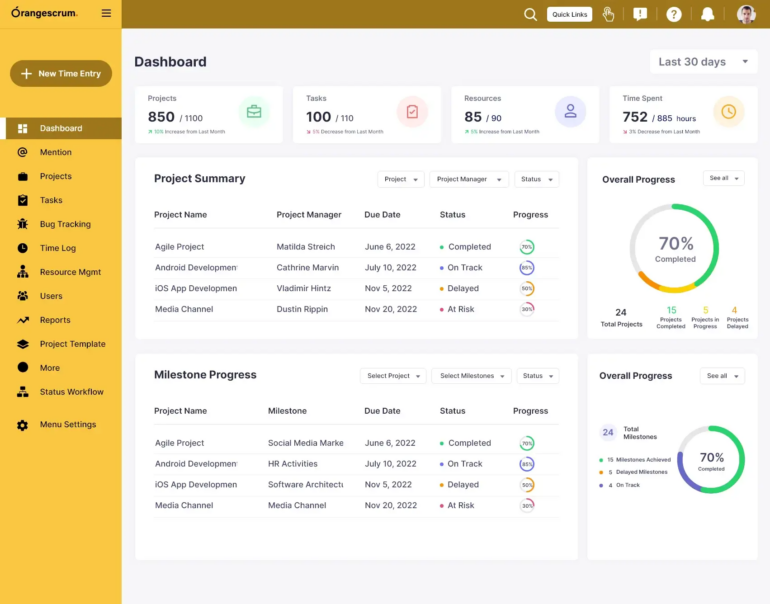
Pricing
Orangescrum has a free open-source community edition that users can download. For the enterprise edition, prospective buyers can purchase Orangescrum as an on-premises solution or use it via the cloud.
Orangescrum cloud plans:
- Free: No cost for three users.
- Startup: $8 per month, billed annually, or $9 billed monthly, for 10 users.
- Professional: $40 per month, billed annually, or $40 billed monthly, for 11 users; pricing varies by number of users.
- Enterprise: Contact sales for a custom quote.
Orangescrum self-hosted plans:
- 25 users: $3,299 one-time payment; $199 optional installation and support fee.
- 50 users: $5,499 one-time payment; $199 optional installation and support fee.
- 100 users: $8,999 one-time payment; $199 optional installation and support fee.
- 200 users: $14,999 one-time payment; $199 optional installation and support fee.
Standout features
- Provides users with analytics for task, hour and weekly usage report.
- Supports views including kanban, scrum and Gantt chart.
- Includes resource management capabilities, such as resource utilization, resource availability and user role management.
- Orangescrum task workflow includes new, in-progress, resolved and closed.
- Includes Wiki capability.
- Integrates with third-party services like Slack, Google Drive, Dropbox, Google Calendar, GitHub, Zapier, LDAP and Outlook.
- Is compliant with various industry standards, including GDPR, CCPA and ISO/IEC 27001: 2013.
Pros
- Offers mobility support via its Android and iOS mobile apps.
- Orangescrum is available in five languages.
- Is customizable.
- Includes time tracking capability.
Cons
- The free and startup plans lack project budget and cost features.
- Steep learning curve.
See how Orangescrum compares to our list of the best enterprise project management software.
GanttProject: Best for ease of use
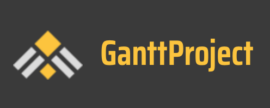
Although the GanttProject interface isn’t as cool as the other tools on our list, the open-source project management application is a powerful tool for scheduling and tracking projects. GanttProject allows users to break down projects into tasks, assign resources, set dependencies between tasks and track progress.
GanttProject is available for Windows, Mac and Linux operating systems and is licensed under the GNU GPL. It is commonly used by small businesses, academic institutions and individual project managers who require a simple, easy-to-use tool for managing their projects.

Pricing
GanttProject is completely free to download and use. However, upon download, users can optionally contribute $5 or more to the project development.
Standout features
- Available for Windows, Linux and macOS.
- Offline mirrored documents capability enables users to edit their project offline and sync when they are back online.
- Includes resource allocation, milestone tracking and project progress tracking.
Pros
- Smooth learning curve.
- Project cost calculation capability.
Cons
- Lacks a mobile app.
- Could improve its user interface.
See how GanttProject compares to our list of the best Gantt chart software.
Taiga: Best for small business
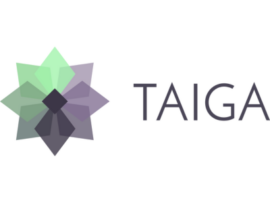
Initially released in 2014 and licensed under the GNU Affero General Public License, Taiga is a desktop-based open-source project management platform that allows teams to manage their projects, tasks and workflows in a collaborative and Agile way. It is designed to be lightweight, agile and easy to use. Taiga supports sprints, backlogs, kanban boards and Gantt charts.
It enables team collaboration and integrates with popular development tools such as GitHub and GitLab.

Pricing
Taiga has both free and paid plans.
- Taiga cloud basic: Free.
- Taiga cloud with premium support: $70 per month or $600 per year.
- Self-hosted: Free and open source.
Standout features
- Includes kanban board.
- Limits work in progress.
- Includes burndown charts on project and sprint levels.
- Includes backlog and sprint planning, including EPICS and subtasks.
Pros
- Taiga is available in over 20 languages.
- Easy to use.
- Customizable.
Cons
- Limited features for complex projects.
- Clunky user interface.
See how Taiga compares to our list of the best project management software for small businesses.
Leantime: Best for small teams and startups
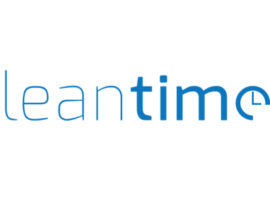
Leantime is an open-source project management system that combines design thinking, lean methodology and Agile practices into an all-in-one system. It is designed to help startup-minded teams ideate, plan and execute projects effectively from start to finish.
Leantime also includes features such as project planning, task management, time tracking, issue tracking and reporting — all of which are designed to help teams stay on top of their projects and work more efficiently together.
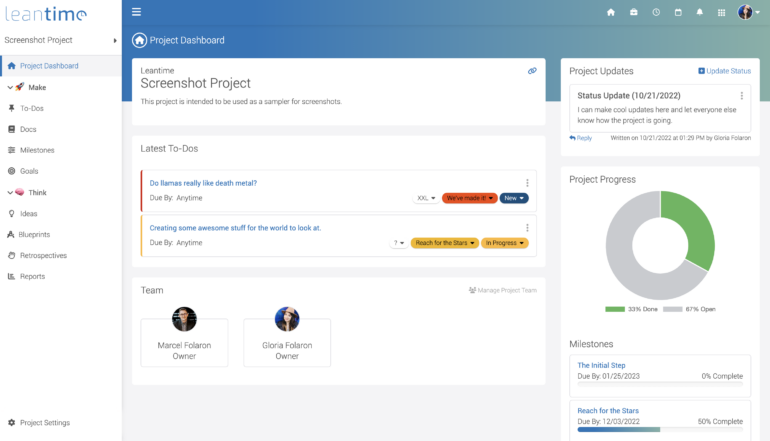
Pricing
Leantime has two main pricing options, pay-per-user and pay-per-project.
Pay-per-user plan:
- Solopreneur: Free.
- The Team: $7 per user per month.
- Enterprise: Custom pricing.
Pay-per-project plan:
- One project wonder: Free.
- Business: $14.99 per project.
- Per user pricing: Custom pricing.
Standout features
- Leantime supported views include kanban boards, lists and Gantt charts.
- Goal and progress tracking.
- Milestone management.
- Document manager.
- LDAP integration and role management.
- Connection with Slack, Mattermost or Zulip.
Pros
- Time tracking capability.
- Extensive technical documentation.
- Ability for users to submit bugs for review.
Cons
- Steep learning curve.
- No mobile app.
See how Leantime compares to our list of the best project management software for time tracking.
ProjectLibre: Best low-costs alternative to Microsoft project
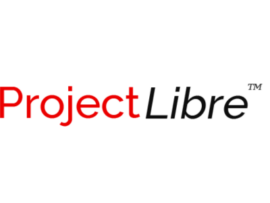
With over 6 million downloads in 193 countries, ProjectLibre is a fork of OpenProj. The development of ProjectLibre started in 2012 and since then, it has been continuously improved and updated by a community of volunteers. ProjectLibre is distributed under the Common Public Attribution License (CPAL), which allows users to use, modify and distribute the software freely. The company describes itself as the #1 alternative to Microsoft Project.
It is a desktop-based project management tool that allows users to create and manage tasks, schedules, budgets and resources for their projects. ProjectLibre is a cross-platform application that works on Windows, Linux and macOS. It includes Gantt charts, network diagrams (PERT charts), resource allocation, critical path analysis and many other project management tools.
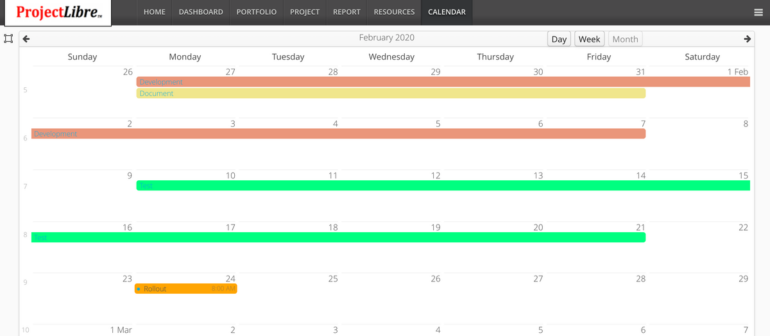
Pricing
Available to download for free.
Standout features
- Resource histograms.
- Network diagrams.
- Resource breakdown structure (RBS) and work breakdown structure (WBS) charts.
- Gantt charts.
- Translation into over 20 languages.
Pros
- Supports Mac, Windows and Linux.
- Includes multi-language support.
- Has a smooth learning curve.
Cons
- Interface needs improvement.
- Lacks a mobile app.
See how ProjectLibre compares to our list of the best Microsoft Project alternatives.
Wekan: Best for kanban boards

Wekan is an open-source kanban board tool licensed under MIT, meaning it is free to use, modify and distribute. It is written in Meteor, a full-stack JavaScript framework.
Wekan offers customizable boards, lists, cards, task management, collaboration tools, task assignment, due dates and notifications. It also supports integrations with popular tools like Slack, Google Drive and GitHub.
As an open-source tool, Wekan has a growing community of contributors and users who constantly improve and add new features to the project. Wekan installation recommends a 64-bit Linux Snap, Sandstorm, Mac or Windows and 1GB RAM minimum free for Wekan as well as a minimum of 4GB RAM for the production server plus enough disk space.
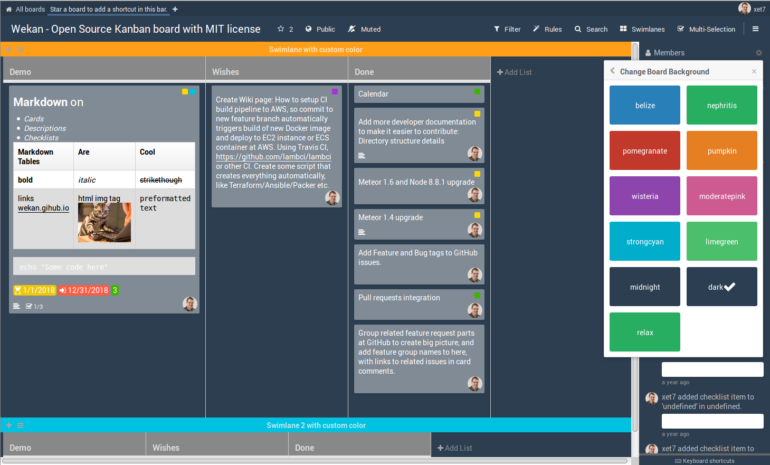
Pricing
Wekan is free to use.
Standout features
- Wekan allows users to customize their boards, lists and cards, making it easy to organize and prioritize their tasks.
- Includes a real-time user interface.
- Wekan design is kanban-based with board, list and card views.
Pros
- Translation into about 50 languages.
- Access control.
- Self-hosted option.
Cons
- The user interface can be improved.
See how Wekan compares to our list of the best kanban software.
Key features of open-source project management software
Look out for the following key capabilities when shopping for an open-source project management tool.
Source code availability and community support
Open-source tools are community-backed. Their source code is usually available on GitHub, allowing users to contribute to the project. Source code enables users to use, modify and customize the software to meet their specific needs. They can also submit bug fixes and request features. Before selecting a tool, check the project’s community:
- Is the community active?
- How often do they roll out an update?
- What are the project track records?
- How easily modifiable is the source code?
Answering these questions will get you started.
Project planning and task management
Project planning is necessary to define project goals, objectives and milestones. The software should provide tools to create project plans, Gantt charts and other planning tools. With task management capability, managers can break a project into smaller tasks and assign them to team members. The software should provide an easy-to-use interface for creating, assigning and tracking tasks. It should also allow users to prioritize tasks, set deadlines and track progress.
Cost savings
Open source project management software is often free or very low cost. This makes it an attractive option for businesses looking for a cost-effective solution for their project management needs.
Collaboration
Collaboration is essential for effective project management. Open source project management software often includes collaboration features such as team messaging, file sharing and real-time updates. The software should provide a platform for team members to communicate, share files and work together. It should also allow for easy feedback and approval processes.
Resource management and time tracking
The software should allow you to manage resources such as people, equipment and materials. It should also provide reports on resource usage. Time tracking is also necessary to ensure projects are completed on time and within budget. The software should allow team members to track their time spent on tasks and provide usage reports.
Methodology
We conducted extensive market research on the project management tools available in the market. We looked at each tool’s features, pricing models, user reviews and customer satisfaction ratings. We analyzed hundreds of open-source project management tools based on five key criteria: affordability, user satisfaction, community strength, features and ease of use. We tested each project management tool ourselves to get first-hand experience. We looked at how easy it was to use the tool, how intuitive it was and how effective it was in managing projects. The vendors above received the highest marks in all five categories. Each of the tools in our list balances affordability and quality service.
How do I choose the best open-source project management software for my business?
The best open-source project management software depends on your needs and preferences. To determine the best solution for your company use case:
- Identify your goals and project management needs.
- Research at least three vendors.
- Engage the community members and, if possible, get on a call to discuss your needs.
- Consider the enterprise edition if the community edition feature is too limited for your needs.
- Request for a free trial to test the tool.
- Select the tool that meets your business needs.
It’s best practice to keep up with your open-source tool community, this will ensure that you won’t miss out on an update.
Smaller teams may prefer a less complex tool than what many open-source options have to offer. If that’s the case, check out our list of the top free project management software instead.








